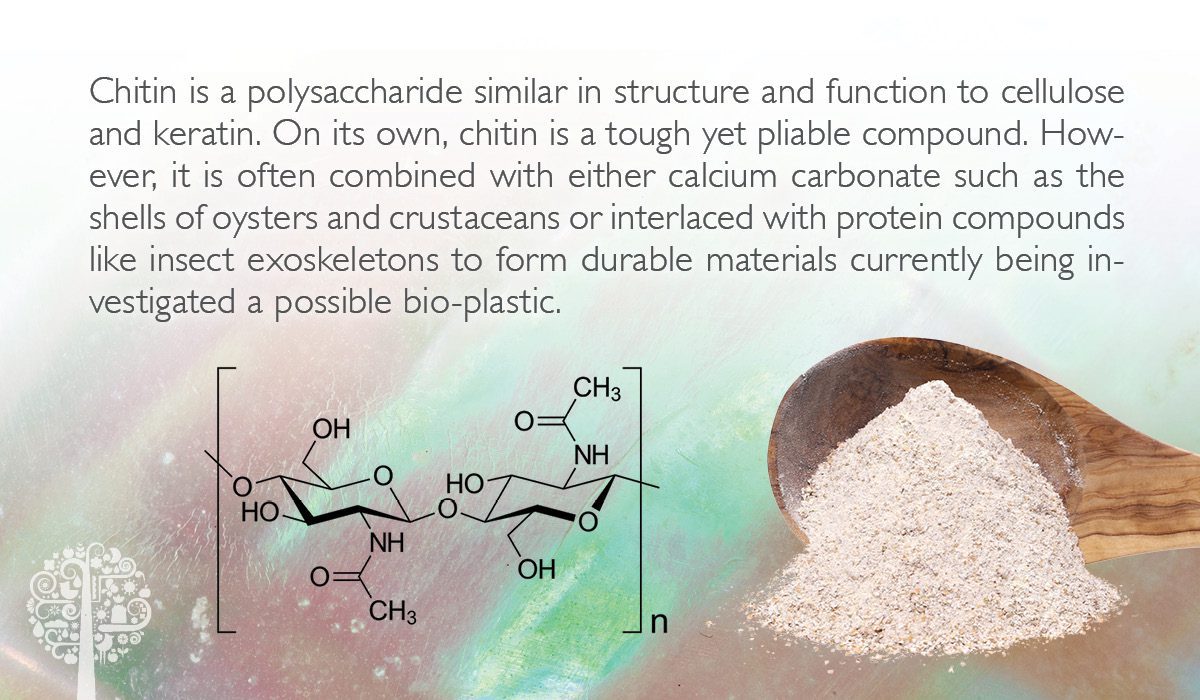Chitin: The Secret To Organic Gardening
What do crustaceans, insects, oyster shells, fish scales, and fungi all have in common? These organisms all contain an interesting compound known as chitin. But what is chitin, and how does it benefit organic growers?
Nothing New
The earliest records of chitlin date back 25 million years in Trilobites! Today, you can find it in the exoskeletons of insects, shells of crustaceans, oysters, mussels, mollusks, and even the cell walls of fungi. You may even have taken a derivative of this substance in glucosamine, sold as a remedy for arthritic conditions.
Chitin is a polysaccharide (a long chain oligosaccharide compound) similar in structure and function to cellulose and keratin. On its own, chitin is a tough yet pliable compound. However, it is often combined with either calcium carbonate such as the shells of oysters and crustaceans or interlaced with protein compounds like insect exoskeletons to form durable materials currently being investigated a possible bio-plastic.
In The Garden
Arguably the most exciting area of research where this compound is concerned is in the agricultural sector. Chitin and its deacetylated water-soluble form, chitosan, show some incredible benefits to plant immunity while also contributing to an increase in the quality of medicinal compound-producing plants.

It is possible to obtain chitin from some organic amendments, such as oyster shell powder, crustacean shell meal, insect frass, and mealworms. It is also available in many commercially produced products in the water-soluble and active form of chitosan.
Bolstered Health
Chitin and chitosan induce a systemic defense response that can promote an increase in chemicals naturally produced by the plant when pests and pathogens are present. This process brings about significant peripheral benefits and has shown promise in preventing plant viruses, pathogenic fungi, and certain insect species.
Using this incredible compound puts plants “on guard” and ready to tackle any impending threat. Because the plant already produces these defense compounds, its systemic immunity is higher, and if an attack happens, the plant can leap into action and protect itself much faster. Incredibly, chitin shows a simultaneous ability to promote beneficial microflora propagation while interfering with or stopping undesirable ones’ proliferation.
Improved Yield and Quality
One of the most exciting benefits of chitin is that it shows incredible promise at increasing active compounds such as flavonoids, terpenes, and overall resin production in medicinal plants. Both studies and real-world anecdotal reports discuss improved yields in dry weights of harvested produce and the actual active constituents produced; higher quantity and quality at the same time! Other research correlates chitin and chitosan use with increased drought resistance, with the plants yielding the same as untreated ones not exposed to drought conditions.
The Verdict
Chitin and chitosan offer a way to boost plant immunity, quality, and drought resistance naturally. Adding this ingredient to our gardens might be the secret weapon organic growers have been waiting for!




